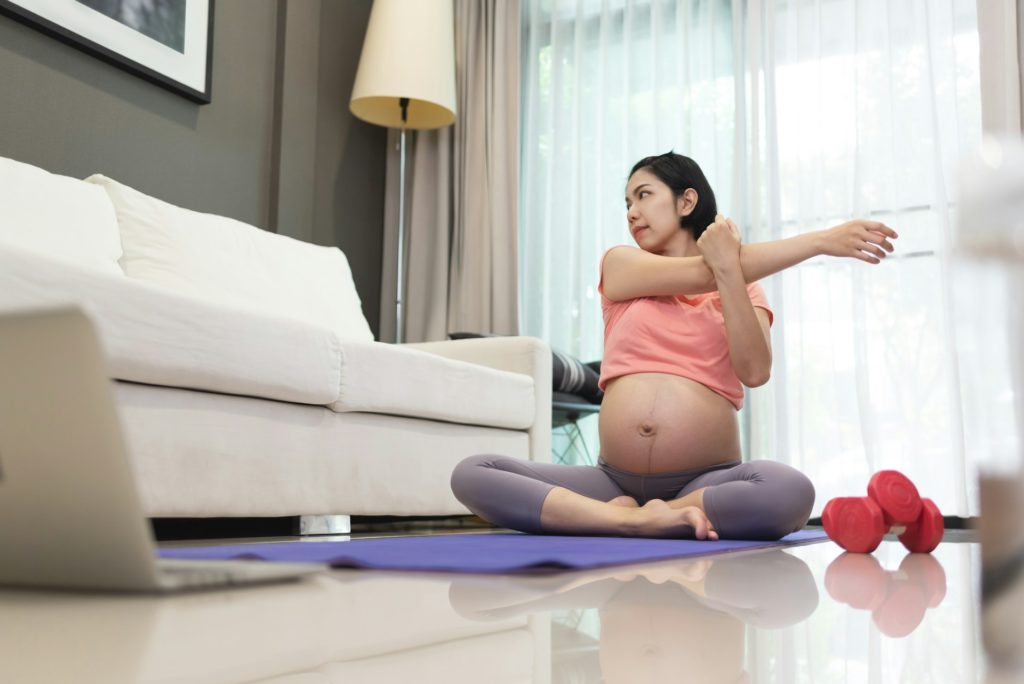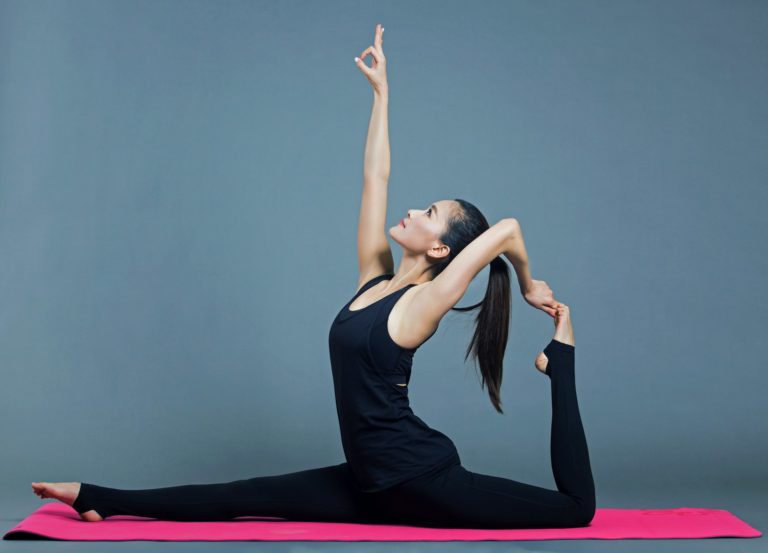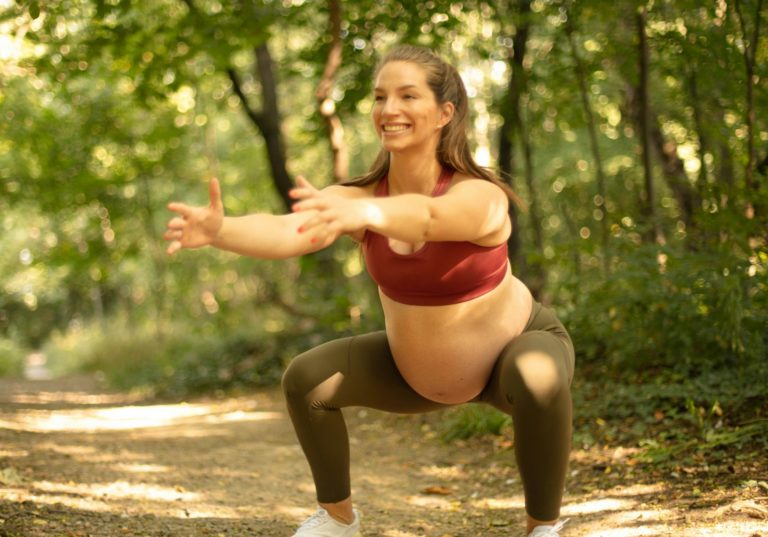1 Safe Yoga for Pregnant Women
A profound transformation occurs during pregnancy – an odyssey that transcends physical embodiment to cradle the essence of connection and serenity. Expectant mothers turn to prenatal yoga not solely for the benefits it bestows upon the body but also for the harmony it imparts to their spirits. The intimate act of breathing life into poses, stretching limbs and bonds, cultivates an unparalleled prenatal peace. Within this ancient practice lies the gentle power to align the heartbeats of both mother and unborn child, to foster resilience and carve out havens of tranquility amidst the burgeoning whirl of new life.
Key Takeaways
- Explore the intersection of mindfulness and physical wellness through prenatal yoga designed for each stage of pregnancy.
- Understand how selected yoga poses can offer pregnant women both mental calm and a healthy physical foundation.
- Recognize the unique adaptations necessary to practice yoga safely during the first trimester and beyond.
- Embrace yoga to establish a special bond between mother and child during pregnancy.
- Gain insight into navigating the everyday challenges of pregnancy with grace and holistic well-being via targeted yoga sequences.
Embracing Prenatal Yoga for Holistic Well-being During Pregnancy
When it comes to enhancing the maternal journey, yoga and pregnancy are an intertwined duo that promotes a symphony of health benefits for both mother and child. Prenatal yoga fosters physical fortitude and nurtures mental respite, making it an ideal pregnancy exercise for women seeking a harmonious gestational period.
Amidst the myriad of prenatal exercises, yoga for pregnant ladies stands as a gentle yet powerful ally in combating the typical distresses of pregnancy. From alleviating backaches to enhancing circulation, the postures and breathing techniques intrinsic to yoga instill a sense of calm and confidence crucial for the coming adventure of motherhood.
Understanding the Mental and Physical Benefits of Yoga for Pregnant Ladies
In a world where stress management is crucial for expectant mothers, yoga emerges as a protective sanctuary. Mindful movement and conscious breathing coalesce to curtail the tendrils of prenatal anxiety, paving the way for a serene mental environment conducive to fetal development.
Scientific Research on Stress Reduction Through Prenatal Yoga
Notably, a study endorsed by the Michigan State University Extension revealed how chronic stress can infringe upon the intricate pathways of fetal neurodevelopment and maternal well-being. Hence, incorporating yoga into one’s prenatal routine can protect against such repercussions and nurture a resilient maternal psyche.
The Mayo Clinic, amongst other health authorities, heralds prenatal yoga as a recommended practice, particularly while navigating the physical transformations of pregnancy. Carefully designed prenatal exercises enable women to maintain health and poise while preventing risks associated with more rigorous or high-temperature yoga modalities.
Ultimately, yoga for pregnant ladies is more than a series of movements; it is a multipronged approach to ensuring a peaceful and potent gestational experience, a true testament to the loving preparation for the arrival of new life.
Starting Your Journey with Safe Prenatal Exercises
Embarking on a yoga regimen during pregnancy is akin to nurturing a garden; it is a delicate process that demands patience, care, and an understanding of the unfolding growth. For safe yoga for pregnant women, embracing a gradual progression into prenatal exercises is wise. The essence of these exercises radiates the promise of prenatal peace, ensuring that both mother and child are aligning in the growth journey. Pregnant women are encouraged to engage in yoga practices that are physically nurturing and mentally calming.
Yoga flows honor the body’s changing dynamics while cultivating strength and flexibility crafted explicitly for expectant mothers. From alleviating back pain to enhancing circulation, these poses offer relief and connection:
- Gentle stretching to maintain muscle elasticity and fluidity.
- Strength-building poses modified for pregnancy safety.
- Calming breathing techniques to stabilize emotions and foster relaxation.
It is paramount to approach prenatal yoga with an informed and cautious mindset. Pregnant women should use traditional yoga poses adapted to suit the pregnant form and integrate props like cushions to support them. Observing the wisdom of physicians and prenatal yoga experts will ensure that your practice is a haven of safety and serenity.
In the vast ocean of exercise routines, prenatal yoga stands as a lighthouse—a beacon guiding pregnant women to harbor within themselves an environment of peace and stability.
Remember, each trimester may bring challenges and adjustments, so it is essential to evolve your practice accordingly. By doing so, not only does the body stay supple and prepared for the transitions of pregnancy, but the mind also remains a bastion of tranquillity amidst the waves of change.
The First Trimester: Establishing a Foundation with Prenatal Yoga
Embarking on the journey of motherhood brings many changes, and integrating prenatal yoga into your routine during the first trimester can form the cornerstone of a robust pregnancy experience. Yoga for pregnant women is far more than a trend; it’s a compassionate approach to staying active and focused on your body’s unique needs as it prepares to nurture new life.
The Importance of Endurance Fitness in Early Pregnancy
While the excitement of expecting is palpable, the first trimester can often bring fatigue and exhaustion. To combat this, a dedicated regimen of pregnancy exercises, tailored explicitly for endurance and gentle strengthening, can prove invaluable. These exercises promote energy conservation and instill a sense of vitality essential for the coming months.
Adapting Yoga Poses for the First Phase of Pregnancy
Pregnant ladies require special attention to ensure their prenatal exercises are safe and beneficial. Adapting classic yoga poses to cater to the first phase of pregnancy is paramount. Poses such as the “Easy Pose” aid in calming the mind. At the same time, the “Unicorn and Rainbow Pose” and “Pointer Dog Pose” are gentle yet effective in strengthening the core and improving balance—prime attributes that support expectant mothers during these transformative months.
Desi Bartlett’s Insights on Nurturing Your Body and Mind
Famed prenatal yoga instructor Desi Bartlett emphasizes the first trimester as a profound period of change. She suggests that yoga for pregnant ladies is not just about maintaining fitness—it’s about cultivating a serene mind and nurturing the connection with your growing baby. Through her expert guidance, many have found solace and strength in prenatal yoga practices that resonate deeply with new mothers.
Embrace the holistic benefits of yoga during this particular time with recommended yoga for pregnant women. It’s the nurturing embrace your body needs as you prepare for the chapters ahead.
Safeguarding Your Well-being: Second Trimester Yoga Adjustments
As you transition into the second trimester, affectionately known as the “honeymoon period,” you might notice a resurgence of energy and general well-being. It’s a reasonable time to revisit and refresh your exercise routine, mainly focusing on prenatal yoga. This period in your journey is crucial for building the endurance and strength that will support you through the rest of your pregnancy and the challenges of childbirth. With the body’s center of gravity shifting and the abdomen expanding, a revised prenatal yoga routine that accentuates safe yoga for pregnant women is not just beneficial; it’s essential.
Understanding the adjustments needed for a safe yoga practice during this trimester is critical. Avoid positions that involve lying flat on your back, which can be uncomfortable and may impede blood flow. Instead, embrace alternative poses to maintain flexibility and build the core strength needed for a healthy pregnancy and delivery.
Gentle Exercise to Alleviate Common Discomforts
The second trimester often brings its physical challenges despite the renewed energy. Prenatal yoga adjusts to these changes by incorporating stretches that relieve common discomforts like back pain and leg cramps. Gentle poses that encourage circulation and muscular relaxation can be particularly soothing for pregnant ladies during this time.
Building Core Strength with Safe Movements
Fostering core stability is paramount as your pregnancy progresses, and prenatal exercises to achieve this without compromising your safety or your baby’s. Through safe movements such as the “Puppy Pose” and “Clock Squat,” you can engage in prenatal exercises that cater to your changing body and add to your strength reservoir for the following stages.
- You are engaging in a modified “Puppy Pose” for back flexibility and alleviation of spinal tension.
- “Clock Squat” exercises enhance core and pelvic floor strength without undue stress on the body.
- It fosters balance and stability with standing poses that prevent overstretching.
Remember, each woman’s body and each pregnancy is unique, so listen to your body’s signals and consult your healthcare practitioner for a personalized exercise regimen that fits your needs. With mindful adjustments and a focus on well-being, yoga during the second trimester can be a beautiful way to strengthen your connection to your evolving body and growing baby.
Finding Balance and Comfort: Third Trimester Yoga Practice
As expectant mothers embark on the third trimester, the landscape of prenatal yoga transforms to accommodate the significant shifts within the body. As the belly blossoms and anticipation surges, the quintessence of a yoga and pregnancy journey morphs into one central theme—**balance and comfort**. For expectant mothers navigating this late stage, prenatal exercises are not merely routines but a haven to support the rapidly changing demands they face.
During these months, yoga practice becomes a delicate dance of adjustments, a sequence of movements and breaths curated explicitly for the unique hurdles of the third trimester. Focusing on poses that provide support and relief, expectant mothers can find solace amid the physical exertion and an emotional grounding that steadies them as the currents of pregnancy ebb towards labor. Here are some of the core aspects that define third-trimester prenatal yoga:
- Balance with props: Using yoga blocks and bolsters to maintain stability while practicing poses.
- Gentle stretches: Emphasizing movements that reduce tension in critical areas such as the lower back and hips.
- Breathwork: Incorporating pranayama techniques to navigate and soothe both body and mind.
- Therapeutic focus: Prioritizing restful poses that replenish energy and allow for moments of peaceful reflection.
The journey through prenatal exercises in the third trimester isn’t about pushing limits but celebrating the capability and adaptability of the pregnant form. It encourages tuning in to the body’s cues, embracing growth, and preparing for what lies ahead with breath and movement as trusted guides.
Through the wisdom of prenatal yoga, each expectant mother can craft a safe, supportive practice deeply connected to the singular rhythm of their personal pregnancy story.
Yoga for Pregnant Women: Preparing Your Body and Mind for Birth
As the miraculous journey of pregnancy begins to culminate, prenatal yoga stands as a beacon, guiding expectant mothers toward the final hurdle—the birth of their child. Unlocking the synergy between mind and body, yoga for pregnant ladies becomes a source of empowerment, imbuing expectant mothers with the strength and composure necessary for labor. Prenatal exercises evolve to meet the unique demands of imminent motherhood, to prepare the body, and to nurture the spirit.
Exercises Designed for Late-Stage Pregnancy Support
In the waning weeks before delivery, maintaining core strength is paramount while navigating the reality of a changing body. The array of prenatal exercises crafted for this purpose supports muscle integrity against the inevitable stretch, ensuring women retain the crucial endurance for labor and recovery.
- Exercise balls to maintain balance and strengthen pelvic floor muscles.
- Modified the child’s pose to relieve back tension and allow for abdominal expansion.
- Gentle flowing movements that connect the mother to her breath and baby.
Expert Guidance on Physical and Emotional Preparation for Delivery
Experts in yoga and pregnancy recommend adopting practices that hone breathing techniques, promote oxygen flow, and provide a tool for pain management during contractions. Emotional preparation is also vital, as the meditative aspects of prenatal yoga strengthen maternal resolve and foster a serene mental state, leading to a more positive birth experience.
Through consistent practice, yoga becomes more than just a workout; it is preparation for one of life’s most profound experiences—giving birth.
Prenatal Yoga Poses: A Step-by-Step Guide to Safe Practice
Embarking on a prenatal yoga journey can be wonderfully beneficial, providing an oasis of tranquility and strength for both mother and baby. It’s essential, however, to understand the significance of approaching prenatal yoga poses with a mindset geared toward safety and comfort. This guide will take you through the necessary steps to ensure your yoga practice is as nurturing and supportive as it should be during this special time.
How to Engage Safely in Beneficial Yoga Poses During Pregnancy
Incorporating prenatal yoga poses into your routine can support your pregnancy. For safe yoga for pregnant women, begin by discussing your intention to practice yoga with your healthcare provider to ensure it suits your specific circumstances. Once you have the green light, you can confidently explore gentle poses like the “Easy Pose” (Sukhasana), which calms the mind and strengthens the spine, or a modified “Downward Dog” (Adho Mukha Svanasana), which relieves back tension and maintains arm strength.
During this transformative period, prenatal exercises should foster relaxation and open, fluid movements rather than the intense, goal-oriented practices you might be used to. Flowing through poses with mindfulness and breathing enhances your physical well-being deeply and creates a serene space to connect with your growing baby.
The Role of Props and Modifications in Enhancing Comfort
Utilizing props like foam blocks, yoga straps, or bolsters can significantly assist in making yoga poses for pregnant women more comfortable and accessible. For instance, a block placed under the hips during seated poses can alleviate hip and lower back pressure, a common discomfort for pregnant women. Modifications, while widening your stance in standing poses or avoiding deep twists, respect the body’s changing needs and support a wholesome and safe yoga practice for pregnant women.
Remember, the goal of prenatal yoga is not to achieve perfect form but to listen to your body and offer it the patience and kindness it deserves. With each yoga session, embrace these modifications and props as valuable tools on your journey to motherhood, ensuring a positive and healthful experience for you and your baby.
Understanding the Do’s and Don’ts of Pregnancy Yoga
Embarking on a prenatal yoga journey can bring tremendous benefits to both mother and child, but navigating this path with an informed mindset is essential. For those engaging in pregnancy exercises and striving for prenatal peace, being aware of beneficial practices and potential risks is vital to a healthy prenatal experience. As we delve into the guidelines safeguarding well-being, expectant mothers can feel empowered to practice prenatal yoga with confidence and serenity.
When to Modify or Avoid Certain Yoga Poses
During pregnancy, the body undergoes profound changes, requiring modifications to traditional yoga routines to accommodate a growing belly, hormonal shifts, and overall comfort. **Prenatal yoga** provides a sanctuary for practicing mindfulness and maintaining fitness, yet it demands a careful selection of poses. Poses that lie flat on the back, deep twisting, or core compression should be modified or avoided to prevent undue strain on the abdomen. It’s beneficial to engage in **pregnancy exercises** that strengthen the pelvic floor and improve circulation, but always under the guidance of a certified instructor well-versed in prenatal exercises.
Advisory Guidance on Avoiding High-Risk Activities Like Hot Yoga
Regarding **yoga for pregnant women,** a cautious approach is paramount. High-temperature environments, such as those found in hot yoga classes, are not advisable due to the risk of overheating, which could affect fetal development. The hormonal landscape during pregnancy increases joint laxity, making it imperative to be mindful of the body’s limits to prevent injuries. Steering clear of high-risk activities and maintaining a regimen of safe **prenatal exercises** ensures the health of both mother and baby. Always consult with healthcare professionals or yoga instructors specializing in prenatal yoga to tailor a practice that resonates with your unique needs and stage of pregnancy.
Useful Links
FAQ
What are the benefits of prenatal yoga for pregnant women?
Prenatal yoga offers numerous benefits for pregnant women, including improved sleep, stress reduction, increased strength and flexibility, decreased lower back pain, nausea, headaches, and shortness of breath. It can also help expecting mothers prepare for the mental and physical demands of childbirth.
How does prenatal yoga contribute to mental well-being during pregnancy?
Yoga supports mental well-being during pregnancy by encouraging relaxation, mindfulness, and stress management through focused breathing and meditation. These practices help to calm the mind, reduce anxiety, and promote a positive pregnancy experience.
Can prenatal yoga reduce stress and its effects on pregnancy?
Yes, scientific research indicates that prenatal yoga can help reduce stress, anxiety, and depression during pregnancy, which in turn may support improved outcomes for both the mother and fetus, including reduced risk of low infant birth weights and better emotional health.
What safety measures should I take when practicing yoga during my first trimester?
Focusing on gentle, non-strenuous poses and avoiding overheating is essential during the first trimester. A practice centered on endurance fitness and modified poses tailored to early pregnancy can help build a strong foundation and manage fatigue without strain.
What adjustments are necessary for yoga during the second trimester?
In the second trimester, avoiding poses requiring lying on the back or involving deep twists is advisable. Instead, pregnant women can focus on poses that build core strength and flexibility, such as modified squats and standing balance poses, to accommodate the growing belly and maintain circulation.
What yoga practices are best during the third trimester?
During the third trimester, yoga should shift to accommodate the enormous belly and include poses focusing on balance, strengthening the pelvic floor, and relaxation. Restorative poses and gentle stretching can help alleviate discomfort and prepare the body for childbirth.
How can yoga prepare my body and mind for childbirth?
Yoga can prepare your body for childbirth by enhancing muscular strength and flexibility, teaching pain management techniques through focused breathing, and aiding mental preparation for labor. Practices that nurture inner calm and physical readiness can be especially beneficial.
Are there any specific prenatal yoga poses recommended for pregnant women?
Pregnant women may benefit from poses like the “Cat-Cow Stretch,” modified “Child’s Pose,” and “Side Angle Pose,” which can help relieve back pain, improve digestion, and increase overall comfort. Props and modifications can also help create a supportive, safe practice.
What are the precautions when engaging in prenatal yoga?
It’s essential to avoid poses that put pressure on the abdomen, overstretching, and any form of intense backbends or inversions. Additionally, practices that could increase body temperature, like hot yoga, should be avoided altogether to maintain a safe environment for the fetus.
Is it necessary to consult a healthcare provider before starting a prenatal yoga routine?
Yes, consulting with a healthcare provider before starting any prenatal exercise routine, including prenatal yoga, is crucial, especially for those with existing health issues, complications, or a high-risk pregnancy, to ensure safety for both mother and baby.
Table of Contents
Toggle







